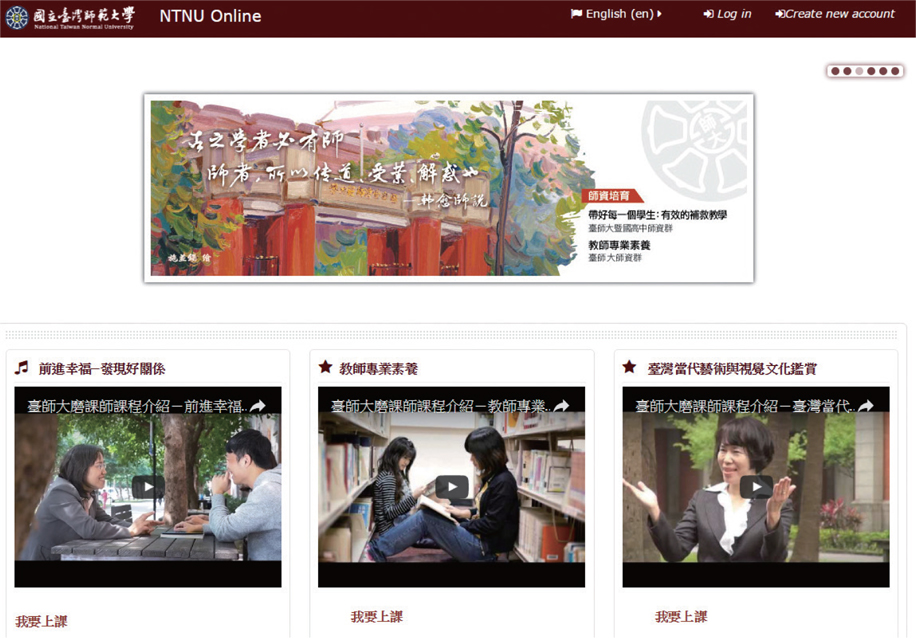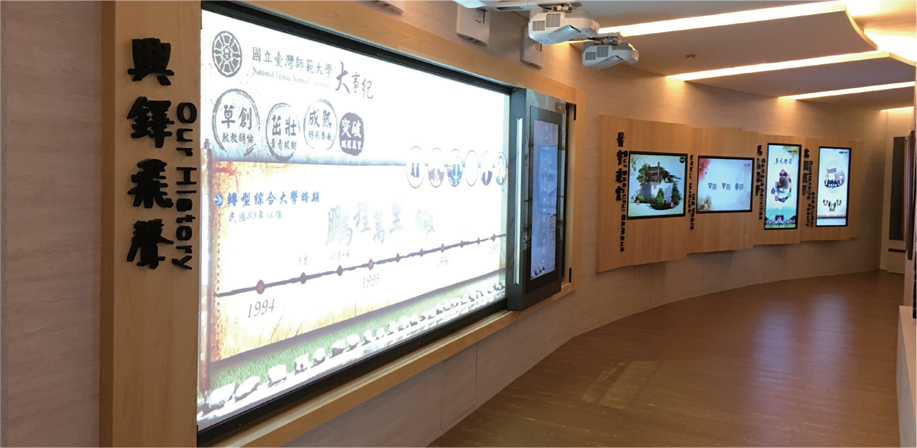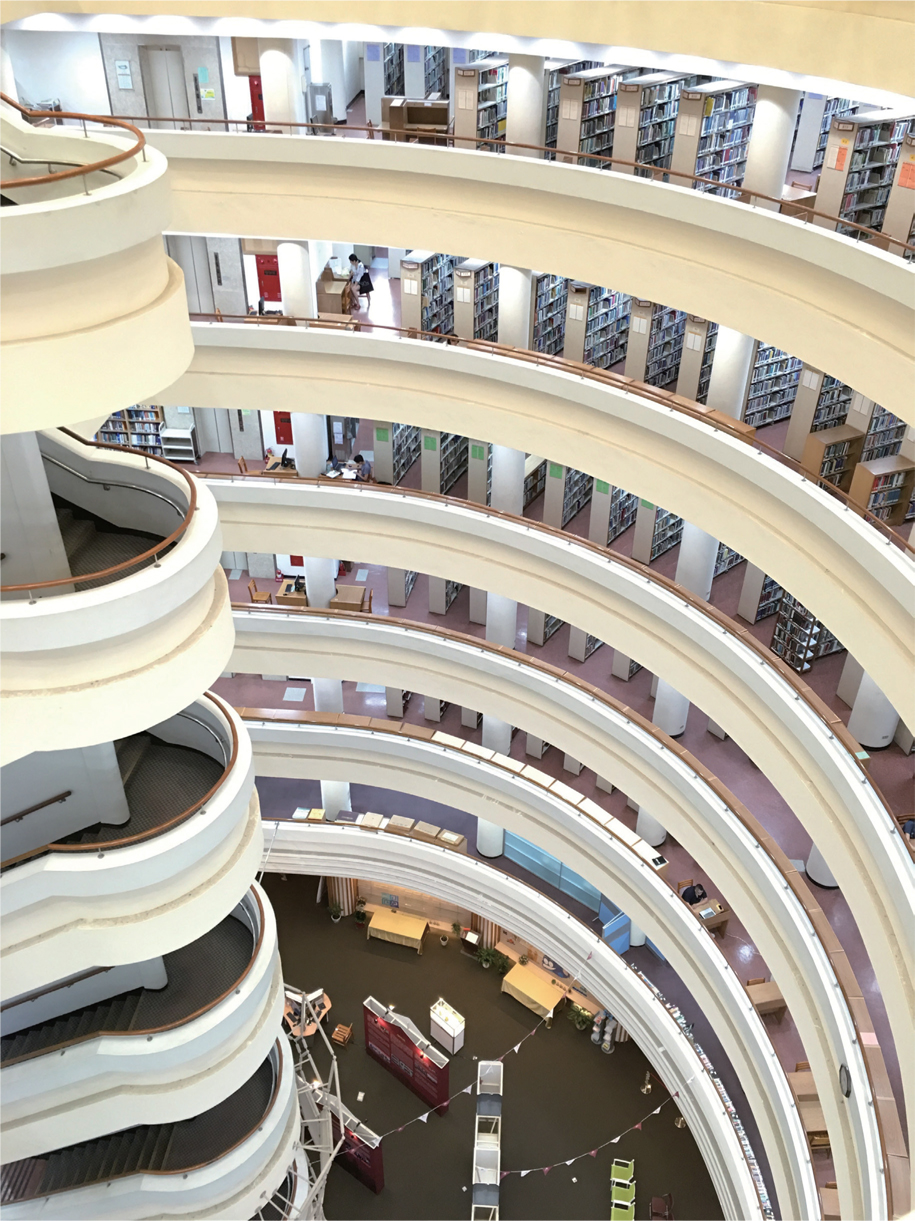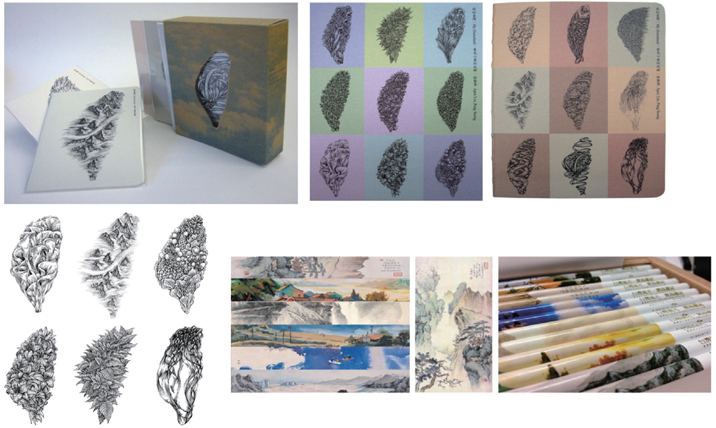



Despite similar missions as cultural heritage and memory institutions, libraries, archives, and museums (LAMs) are usually three distinct types of institutions. However, by collaborating together, not only can LAMs deal with common challenges, they can also spend their valuable time and resources to handle things only libraries, archives, and museums can do individually, for example, collecting and preserving unique materials, and meeting local users’ needs (Waibel & Erway, 2009).
Established in 1946, National Taiwan Normal University (NTNU) was formally an institute dedicated to teacher education. Celebrating its 70th anniversary in 2016, NTNU (the university) has evolved into a comprehensive university. NTNU offers a wide spectrum of courses and degrees under its nine colleges, including the arts and humanities, education, sociology, business management, athletics, and the sciences. According to the QS World University Rankings for 2015/16, NTNU’s overall ranking is 376th; NTNU is ranked as 44th in Education and Training, 64th in Asian University Rankings, and 160th in Arts and Humanities categories (National Taiwan Normal University, 2016).
As a prestigious university, NTNU is aware of the importance of the university archive, museum, and university press. However, under the constraints of budgetary and administrative costs, the university deems that it is infeasible to set up these units separately. Because NTNU Library (the library) has excellent performance and expertise in curating recorded information, and libraries, archives, museums, and publishers (LAMPs) have considerable commonalities (and differences, of course), NTNU has decided to fuse LAMPs together in the library.
This article describes the experience of NTNU Library in fusing LAMP functionality. The following sections will present the transformation of NTNU Library services, and how NTNU Library plays the roles of university archive, museum, and university press. Finally, it ends with a conclusion and discussion.
2. TRANSFORMATION OF LIBRARY SERVICES
University libraries have long been considered as the hearts of universities. Despite this, a university library has to keep innovating its services in order to maintain or raise its position on campus. This section describes a few endeavors of NTNU Library for innovating its services, including patron-driven acquisition (PDA), the provision of open educational resources (OERs), and the enhancement of research visibility.
2.1. Patron-Driven Acquisition
NTNU Library implements patron-driven acquisition (PDA) in coordinating the Taiwan Academic E-books and Database Consortium (TAEBDC). TAEBDC is an e-book procurement consortium with more than 90 members, mostly university libraries. TAEBDC adopts three purchasing models:
Collection model: Purchasing whole e-book collections provided by vendors; Pick and choose (P&C) model: Purchasing certain e-books that fit the needs of member libraries; and PDA model: Purchasing mostly used e-books during a trial period.
In principle, each e-book vendor can participate in only one model according to the characteristics and pricing model of its e-book products. All the members vote for the vendors whose products are to be purchased.
TAEBDC has been adopting the PDA model since 2012. Table 1 displays PDA Chinese e-book usage analysis. Comparing with the non-PDA e-books purchased from the same vendor, PDA e-books have higher average downloads (57 vs. 68) according to the Project COUNTER’s Book Report 1 (BR1) statistics. Similarly, Table 2 reveals the same pattern for English e-books; PDA e-books have the highest average downloads according to the Project COUNTER’s Book Report 2 (BR1) statistics. This evidence encourages TAEBDC to continue purchasing more e-books based on the PDA model.
[Table 1.] PDA Chinese E-book Usage Analysis.

PDA Chinese E-book Usage Analysis.
[Table 2.] PDA English E-book Usage Analysis.
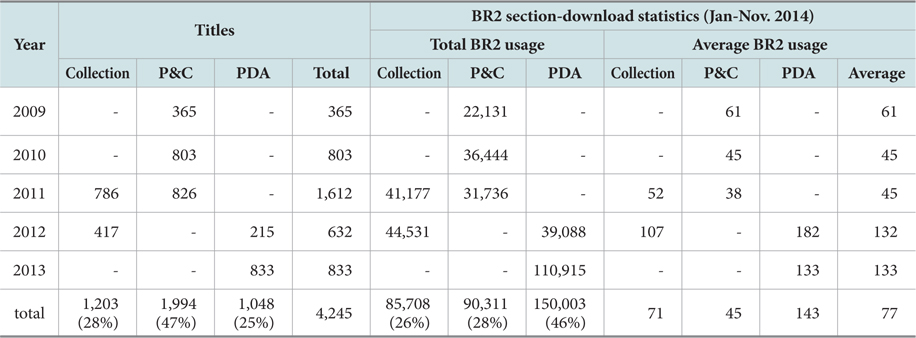
PDA English E-book Usage Analysis.
2.2. Open Educational Resources
Openness is a buzzword in higher education. The 2015 NMC Horizon Report for Higher Education (Johnson, Adams Becker, Estrada, & Freeman, 2015) mentioned that the proliferation of open educational resources is one of the mid-term trends that has been driving the adoption of education technology in higher education for three to five years. There are two important movements for openness in higher education, namely, opencourseware (OCW) and Massive Open Online Courses (MOOCs).
NTNU Library started the OCW Project in 2007. An OCW team under the System Department of the library is formed. The OCW team is responsible for inviting enthusiastic teachers, film shooting, post production, and maintaining the OCW website. The OCW website is designed using an Open-Source Learning Management System (LMS), Moodle. In addition, a mobile system is developed to facilitate access to OCWs through mobile devices. At the time of writing this article, the library has produced more than 500 OCWs covering 28 subjects.
NTNU initiated the MOOCs project in 2014. This project is overseen by one NTNU Vice President, coordinated by a project leader, and collaborated on among the Office of Academic Affairs, the library, and the Information Technology Center. The Office of Academic Affairs is responsible for establishing policies and inviting teachers to participate; the tasks of the Information Technology Center lie in developing the system for MOOCs using Moodle; the library takes charge of film shooting and post-production because of its past experience in OCW. As of May 2016, NTNU has finished the production of 12 MOOC courses, the subjects of which cover general education, classical literature, teacher education, sports, green energy, and fine arts. Figure 1 illustrates the homepage of NTNU MOOCs website.
2.3. Improvement in Research Visibility
Supporting the strategic plan of NTNU, NTNU Library deems that improving NTNU’s research visibility is one of its core missions. Several actions have been taken to achieve this mission.
Using MIT DSpace, NTNU Library creates its institutional repository (http://rportal.lib.ntnu.edu.tw/). The institutional repository archives the publications of faculty members and electronic theses and dissertations. Notably, the system stores the articles of 66 journals published by NTNU academic and administration units, 30 of which are continuously published.
By offering globally unique identifiers for researchers to alleviate the problem of name ambiguity, ORCID (http://orcid.org/) has been attracting the attentions of researchers and publishers. ORCID is beneficial for increasing the visibility of research output as well. Endorsed by the NTNU president, the library has promoted ORCID into NTNU from 2013 on. Subject librarians contact faculty members and encourage them to register with ORCID. As of May 2016, there have already been one third of the faulty members registering with ORCID, and the library will continue the promotion of ORCID.
The
Last but not least, the library collaborates with the Office of Research and Development to help departments and institutes analyze their research performance. Elsevier’s SciVal is employed as the analysis tool, which can give an overall picture of research output and impact, conduct benchmarking analysis with peer institutions, and discover current and potential research collaboration. The library is planning to harness its subject librarian team for the purpose of producing a research performance report for each department and institute.
Libraries have, without doubt, rich experiences in curating recorded information such as books and journals. In view of this, the university assigned a new mission to NTNU Library in 2007, managing and revitalizing the university history. Responding to the new mission, NTNU Library created the Department of University History.
NTNU Library adopts the generic curation lifecycle model proposed by the Digital Curation Centre (DCC) (Digital Curation Centre, 2008) to curate NTNU’s historical artifacts and records. It appraises and selects valuable historical artifacts and records about the university’s history, masters, and outstanding alumni and faculty members. About 4,500 historical artifacts and records have been collected and digitized.
Several activities have been carried out to facilitate access to, use, and reuse of the university history. In the digital world, NTNU Library implements the
In the physical world, NTNU Library organizes exhibitions related to university history about twice per year. For each exhibition, a virtual exhibition is created correspondingly. To celebrate the university’s 70th anniversary, the library has renovated the
As many university libraries, NTNU Library is one of the most popular places on the campus that have many visitors (NTNU people and the general public). In addition to a place for reading and studying, the library is a place for cultivating artistic temperament. The first floor of the library is a good venue for exhibitions because of its spectacular building as depicted in Figure 3. It held 24 exhibitions in 2015. By far the greater part of the exhibitors are by the university’s students. Despite that the NTNU Museum is under construction, the NTNU Library will continuously serve as a museum for students to showcase their achievement in fine arts.
One of the strongest disciplines of NTNU is fine arts. Developed over more than 60 years, the Department of Fine Arts has collected many excellent artworks drawn by skilled faculty members and students. These artworks represent indispensable cultural assets of Taiwan since World War II. NTNU started a project on restoring the artworks in 2006, and finally founded the Research Center for Conservation of Culture Relics, responsible for restoration and archiving of those artworks, in 2011. About 3,600 artworks are accessioned and 452 of them have been restored. In order to put the artworks to good use in research, exhibition, and education, the university established the NTNU Art Bank in 2010. The NTNU Art Bank loans artworks to organizations and institutions for decoration and exhibition at reasonable prices, and in this manner the invaluable can be appreciated by the general public. The NTNU Art Bank is collaborated on among the College of Arts, Research Center for Conservation of Culture Relics, and the library. The library’s responsibilities include developing an information system for accessioning and checking-in/out of artworks, and managing an artwork repository with constant temperature and humidity.
Libraries and publishers are two important entities in the scholarly communication lifecycle, but they are usually separated. Many prestigious universities operate university presses, but usually independent of their libraries.
In consideration of the significance of the university press, NTNU founded its university press in 2010. Different from many universities, the university press of NTNU is administrated by the library. Three primary missions of NTNU University Press are: publication, cultural and creative product design, and monument management.
NTNU University Press provides a full-fledged publication service, including editing, typesetting, proof-reading, printing, sales, and marketing. It publishes about 10 books per year. The genres of publication include academic monographs, general-education books, art books, and textbooks. The Office of Research and Development awards excellent academic monographs every year, and the university press supports the awards by conducting a peer-review process. The university press hosts the Shih-chiu Liang (梁實秋) literary award; Shih-chiu Liang was a well-known litterateur and translator. He was also the Dean of College of Liberal Arts of NTNU. To honor his contribution to literature in Taiwan, the Shih-chiu Liang literary awards are held yearly. The literature award comprises two kinds of contests, prose writing and English-to-Chinese translation (proses and poems). The number of contestants ranges from 300 to 500 each year. The award-winning works will be published.
The second mission of NTNU University Press lies in producing cultural and creative souvenirs. It attempts to blend the imagery of NTNU Campus, Taiwanese endemic species (plants, birds, and butterflies) into souvenir designs.
Figures 4 and 5 depicts two popular series of NTNU souvenirs, Taiwanese endemic species with the branding name
Established in 1946, NTNU inherits a few old buildings from Taihoku High School (Taihoku is the old Japanese appellation of Taipei) during the Japanese colonial period. One of the old buildings is called 文薈廳 (elite-gathering hall), which is now a cultural monument of Taipei City. It encourages students to be liberal and self-disciplined. The monument is managed by NTNU University Press as well. It is a multi-purpose space. Faculty members and students are free to enter this hall for studying, discussing, and chatting. A book ATM that displays 450 books and allows patrons to borrow and return books is equipped. About 100 campus activities (for example, workshops, press conferences, and music performances) are hosted each year. There is also a bar serving light food and drink. Finally, it is also a store outlet of NTNU University Press for selling gifts and books.
The university library has long been considered the heart of a university; however, it is undeniably true that the position of a university library on the campus has gradually declined, partly because of the enormous quantity of information on the Internet. To keep and even raise the status of a university library, transformation of library services to support the strategic plan of the parent university is essential. This article presents NTNU Library’s efforts in providing new services, including patron-driven acquisition, open educational resources, and improvement in research visibility. The next step for the library lies in initiatives such as linked data, research data management, and digital humanities. Besides this, as shown in NTNU Library’s experience, it is important to have close collaboration with academic and administration units in the university. In this manner, not only can a university library enhance its visibility in the campus, the library can also fully support the strategic development of the parent university.
As pointed out by Duff, Carter, Cherry, MacNeil, & Howarth (2013), a number of factors influence the collaboration and convergence of LAMs, including providing better user services, supporting scholarly activities, taking advantage of technological development, considering the need for budgetary and administrative efficiency, adopting the tendency of digital curation, and obtaining a holistic view of collections. The reason why NTNU fuses LAMP together is very similar. Under the pressure of budgetary and administrative costs, it is very difficult to create new administration units in NTNU. Counting on the System Department of the library, the information systems needed by the Department of University History of NTNU Library, NTNU Art Bank, and NTNU University Press can be seamlessly developed and integrated. The System Department of the library also develops a digital curation system that can be used among LAMPs. In order to provide users with a one-stop search experience, the library is planning to load the LAMP descriptive records into its Web-scale discovery service.
There are challenges in NTNU Library fusing the LAMP functionality. Not much additional manpower was given by the university; therefore, the library had to transfer manpower from the existent departments to the newly formed Department of University History and NTNU University Press, which might increase the work load of existing departments. Furthermore, some librarians do not consider the archive and the publisher as the core responsibility of the library, which may result in silos. Most staff of the Department of University History and NTNU University Press majored in Library and Information Science, and lacks the domain knowledge of archives and publication; they acquire the knowledge and skills necessary for an archive and a publisher in a learning-by-doing manner; therefore, staff are encouraged to take continuing-education training.
The experience of NTNU Library in playing the LAMP role may not be perfect; nevertheless, it demonstrates a feasible way to provide LAMP functionality and services in a university without creating new administrative units. Similar to other LAM endeavors that converge individual libraries, archives, and museums, NTNU Library sees a necessity to conquer challenges such as respecting professional cultures, values, and identifies; building a common understanding of different work practices; and merging or reconciling variant standards (Duff, Carter, Cherry, MacNeil, & Howarth, 2013) for achieving the ultimate LAMP goals.


